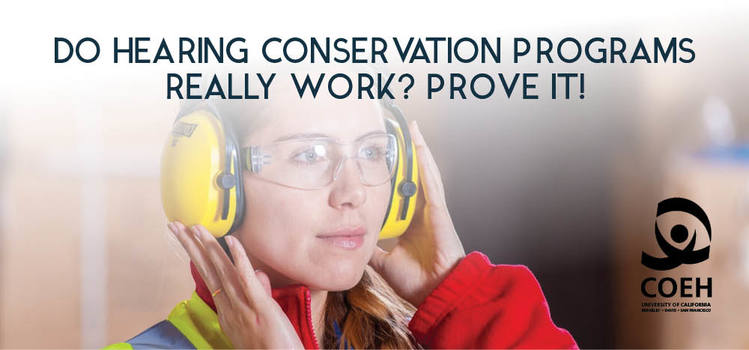| Do Hearing Conservation Programs Really Work? Prove It! |
| 10/25/2018 |
| 1:00 pm - 4:15 pm |
| Elihu M. Harris State Office Building |
| Room 11 |
| 1515 Clay Street |
| Oakland, CA, 94612 |
| Event Description: |
This course examines the purpose of hearing conservation programs (HCPs), and provocatively challenges why they may not fulfill their intended purpose of preventing noise-induced hearing loss (NIHL) in spite of extensive investments in fulfilling regulatory compliance requirements. Learners will review how and why noise exposure (industrial hygiene) and hearing (audiometry) data currently collected are under-utilized. Finally, learners will explore new approaches on how to transform hearing conservation from a compliance obligation to an evidence-based, Best Practice system that measures and manages risk by leveraging the power of analytical statistics and information technology.
Objectives:
At the completion of this activity, the learner will be able to:- Describe the basic mechanism of NIHL from cumulative noise exposure, and why hearing protective devices may not be fully effective in preventing disease
- Discuss the state of science on measuring the effectiveness of HCPs in preventing NIHL
- Review the efficacy of standard noise exposure measurements in predicting the risk of NIHL
- Recognize limitations of individual audiogram interpretations and standard threshold shifts, and discuss new statistical models for predicting hearing loss and measuring HCPs effectiveness
Registration Fee:
Standard Registration: $75.00Government Employees: $60.00
Full Course Description:
This course explores the rationale for and demonstrated efficacy of hearing conservation programs (HCPs) for prevention of noise-induced hearing loss (NIHL).
HCPs have been implemented in hundreds of thousands of companies throughout the world for over 40 years. Most such programs are conducted to comply with safety and health regulatory requirements, such as the OSHA Noise Standard in the US. Billions of dollars are spent annually to supply and enforce use of hearing protection and training for workers, and to conduct noise monitoring and annual audiograms. Despite these efforts, NIHL continues to be the most prevalent occupational disease in the industrial world.
These paradoxical findings beget the question: Do hearing conservation programs really work? If so, how can efficacy be objectively demonstrated—and justified economically—in practice by companies and regulatory bodies?
In the first part of this course, the medical mechanism of how noise exposure causes hearing loss, and the basis for hearing protection to prevent cumulative hearing damage will be explained. The scientific research on whether, or to what extent, hearing protection and HCPs have been demonstrated to effectively prevent NIHL will be summarized.
Learners will also review standard industrial hygiene practices for measuring workplace noise and how to characterize noise data into similarly exposed groups. Practical aspects of primary source controls and secondary preventon, such as hearing protective devises, will be discussed in the context of how accurately exposure data predicts risk of NIHL, and the extent to which the efficacy of these controls has, or could be demonstrated.
The final part of the course will focus on new approaches for utilizing existing audiometric and exposure data to characterize risk and evaluate HCP efficacy. The inherent limitations of individual audiogram interpretations and standard threshold shifts as lagging indicators of preventive efficacy will be discussed. New approaches to audiometric database analysis (ADBA) will be proposed as a model for predicting NIHL and as criteria for measuring HCP effectiveness. Opportunities for implementing the proposed approaches will be described and discussed.




